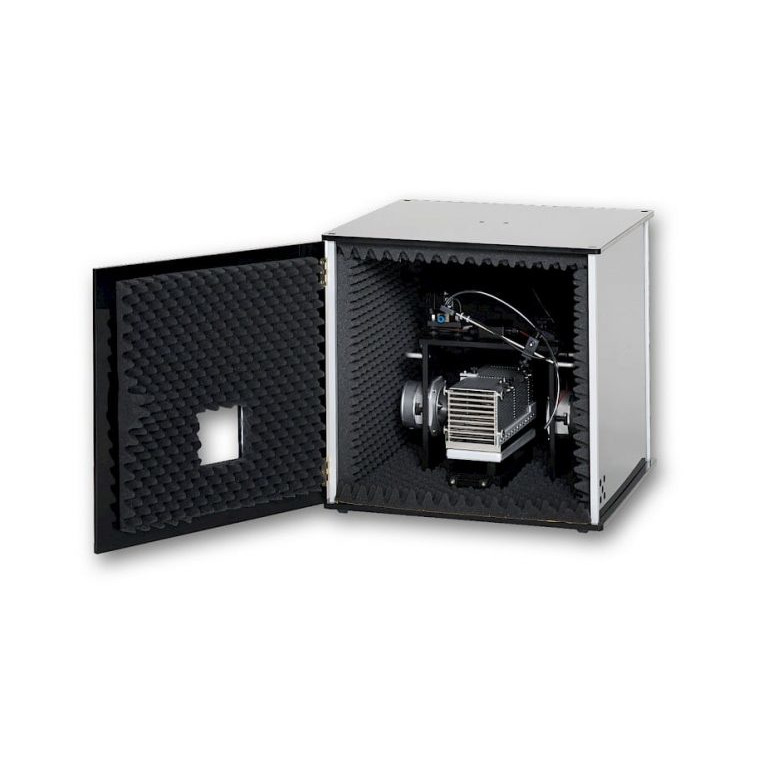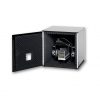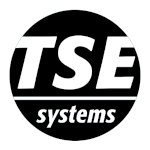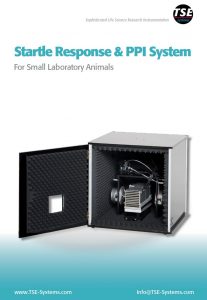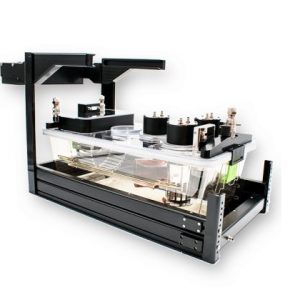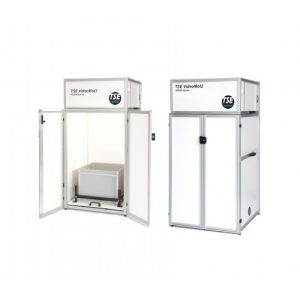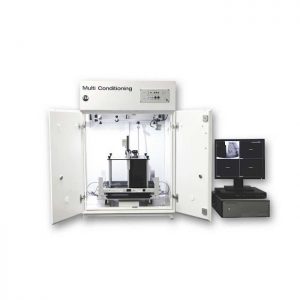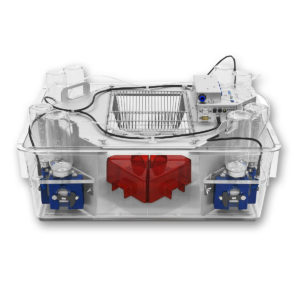Startle Response System/PPI Test System
Computerised system designed for the determination of the startle reflex and evaluation of sensorimotor gating in rodents.
Product Enquiry
If you would like to send us an enquiry about this product, please click the button below, fill in the form and submit.
Product EnquiryStartle Response System/PPI Test System
Sensorimotor Gating
TSE Startle Response/PPI test system is a computerized system designed for the determination of the startle reflex and evaluation of sensorimotor gating in rodents.
Available for both mice and rats, the system features cages with an integrated floor grid for increased animal welfare and species-specific measuring platforms placed in a small sound-attenuated housing. The platform is equipped with a high-precision load cell that detects the startle reflex in response to a loud sound or noise that is generated by a pair of high-quality loudspeakers.
The Startle Response software package is versatile and allows user-defined test protocols for a variety of different applications. Experiments are created from trials that can later be presented in fixed or randomized order. Whether you want to apply a startling stimulus only to measure habituation, pre-pulses only, pre-pulse +stimulus to measure inhibitory effects on the startle response or no stimulus to determine baseline activity, this system can run the combined trials to experiments or run the same trial repeatedly with variable inter-trial intervals.
For assessment of the fear-potentiated startle (i.e. a model of conditioned fear), the startle reflex is augmented by light if a foot shock is paired with the light stimulus in a previous conditioning session. The light-enhanced startle paradigm is an animal model for anxiety and is sensitive to drug manipulations.
After baseline determination, the pre-defined procedure is automatically executed in up to 16 Startle Response units in parallel. The movement of the animals are registered by the load cells with up to 1ms time resolution and stored for later analysis.
The startle reflex is automatically calculated from the movement data according to a user-set trigger threshold. Graphs allow the quick comparison of the performance in a group of animals or of a group of trials of one animal. Reaction time, i.e. response latency, and startle amplitude for each trial are presented in results tables for further statistical evaluation.
Features
- Force platforms for rats and mice – species-specific maximum load
- Test cages with integrated floor grid and feces tray
- Combination system for rats and mice
- Pair of high-performance loudspeakers
- Software-controlled sound/noise up to 130dB
- Shocker & light for Fear-potentiated startle
- Air puff as alternative to foot shock
- High-intensity lamp for light-enhanced startle
- Up to 16 measuring units controlled by a single computer
Applications
- Sensorimotor Gating
- Drug Testing
- Fear Conditioning
Disease model
- Schizophrenia
Brochure
Selected Publicatons:
Kozhemyakina RV, Shikhevich SG, Konoshenko MY, Gulevich RG. Adolescent oxytocin treatment affects resident behavior in aggressive but not tame adult rats. Physiol Behav 2020; 224:113046.
Mett A, Karbat I, Tsoory M, Fine S, Iwanir S, Reuveny E. Reduced activity of GIRK1-containing heterotetramers is sufficient to affect neuronal functions, including synaptic plasticity and spatial learning and memory. J Physiol 2020 Oct 30. Epub ahead of print
Tsybko AS, Ilchibaeva TV, Filimonova EA, Eremin DV, Popova NK, Naumenko VS. The Chronic Treatment With 5-HT2A Receptor Agonists Affects the Behavior and the BDNF System in Mice. Neurochem Res. 2020; s11064-020-03153-5. Epub ahead of print.
Uzuneser TC, Speidel J, Kogias G, Wang AL, de Souza Silva MA, Huston JP, Zoicas I, von Hörsten S, Kornhuber J, Korth C, Müller CP. Disrupted-in-Schizophrenia 1 (DISC1) Overexpression and Juvenile Immune Activation Cause Sex-Specific Schizophrenia-Related Psychopathology in Rats. Front Psychiatry 2019; 10: 222
Macharadze T, Budinger E, Brosch M, Scheich H, Ohl FW, Henschke JU. Early Sensory Loss Alters the Dendritic Branching and Spine Density of Supragranular Pyramidal Neurons in Rodent Primary Sensory Cortices. Front Neural Circuits 2019; 13:61
Selected Product Citations
Astrocytic Regulation of Basal Ganglia Dopamine/D2-Dependent Behaviors |
|
| Johanneke E.Johanneke E. Oosterman Oosterman, Laura L.Laura L. Koekkoek Koekkoek, LeslieLeslie Eggels Eggels | bioRxiv | Published 11 May 2021 |
| Article Snippet PrePrint: Acoustic startle response and prepulse inhibition (PPI) Acoustic startle response and PPI were measured using SR-Lab Systems (San Diego Instruments, San Diego, CA, USA) and TSE Startle Response System (TSE Systems GmbH, Bad Homburg, Germany) following previously described protocols , .. Briefly, a sudden acoustic stimulus (120 dB) elicits the startle response, while an acoustic, non-startling pre-pulse (74; 78; 82; 86; 90 dB) preceding the startle stimulus inhibits the startle response (PPI). |
|
Neuroplastin expression is essential for hearing and hair cell PMCA expression |
|
| Xiao Lin, Michael G. K. Brunk, Andrew W. Curran | Brain Struct Funct | Published 12 Apr 2021 |
| Article Snippet Compartment changes during CS were counted as conditioned avoidance reactions.. The acoustic startle response to a stimulus (50 ms, 120 dB) and its inhibition by prepulses (PPI) (30 ms; 100 ms before startle stimulus with eight different intensities, 73–94 dB, 3-dB increments, 70 dB white noise background) was analyzed in a startle-box system (TSE Systems GmbH).. Habituation (3 min) was followed by two startle trials and in pseudorandom order by 10 startle trials and five trials at each prepulse intensity with stochastically varied intertrial intervals (5–30 s). |
|
Presynaptic vesicular accumulation is required for antipsychotic efficacy in psychotic-like rats |
|
| Taygun C Uzuneser, Eva-Maria Weiss, Davide Amato | J Psychopharmacol | Published 4 Dec 2020 |
| Article Snippet Two loudspeakers, which were mounted inside the soundproof boxes, presented the acoustic stimuli.. Two pre-pulse alone trials (80 and 86 dB), three pulse alone trials (100, 110, and 120 dB), and six pre-pulse + pulse trials were repeated 10 times in a pseudo-randomized fashion, and the startle responses were measured using the TSE startle response system (TSE Systems, Bad Homburg, Germany).. Two pre-pulse alone trials (80 and 86 dB), three pulse alone trials (100, 110, and 120 dB), and six pre-pulse + pulse trials were repeated 10 times in a pseudo-randomized fashion, and the startle responses were measured using the TSE startle response system (TSE Systems, Bad.. |
|
View more citations at the TSE website

